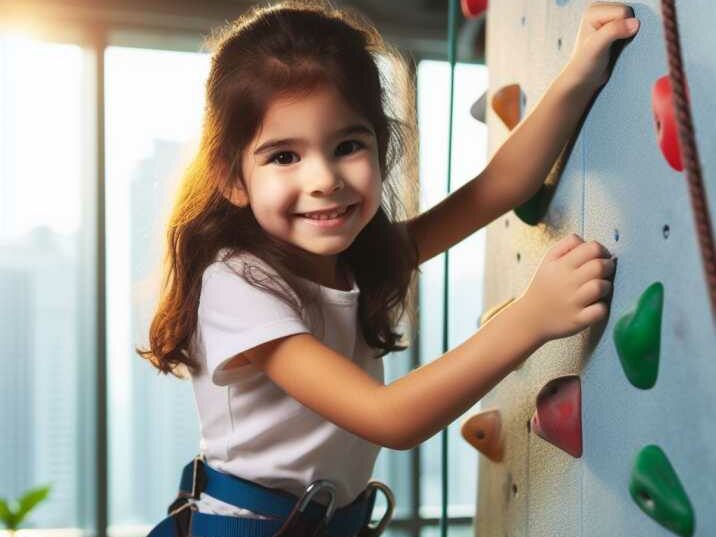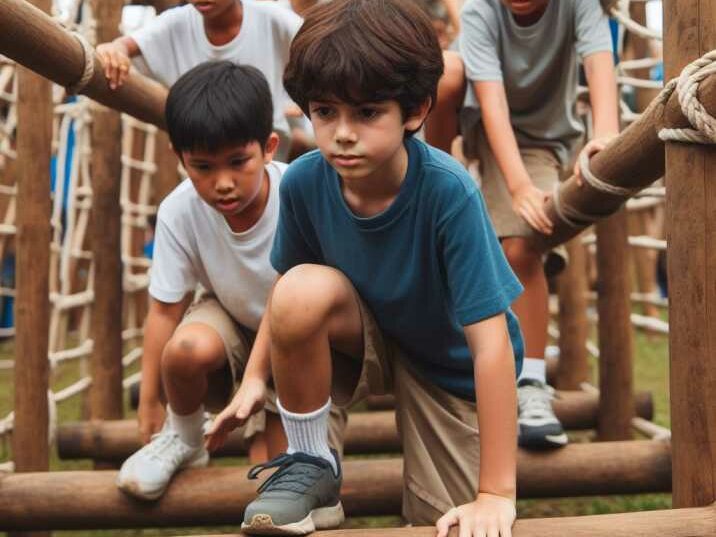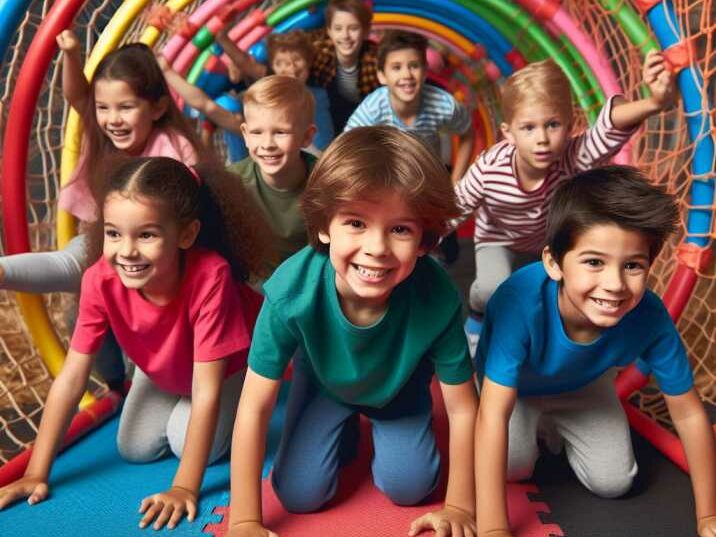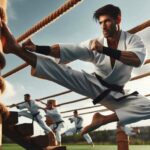Obstacle Courses for Self-Defense
Table of Contents
Introduction:
In a rapidly changing world, empowering kids with essential life skills is crucial. One such skill is self-defense, and an innovative approach to achieving this is through Obstacle Course Training. This article delves into the exciting realm of Obstacle Courses for Self-Defense Situations for kids , exploring how it not only enhances physical fitness but also equips them with valuable tools for self-defense.
Summary
In today’s dynamic world, where unforeseen challenges can arise at any moment, empowering our children with essential life skills is paramount. One such skill that stands out is self-defense, and we’ve discovered a unique and engaging way to obstacle courses for self-defense transforms kids. This article will take you on a journey through the exciting world of obstacle courses, exploring how they not only enhance physical fitness but also equip kids with valuable tools for self-defense. So, let’s dive in and discover the wonders of obstacle courses for self-defense Training for preparing Kids!

The Importance of Self-Defense for Kids:
Children face various challenges as they navigate the world around them. Instilling a sense of self-defense at an early age not only boosts their confidence but also provides a practical skill set to handle unforeseen situations.
Obstacle Course Training: A Fun Path to Preparedness:
Understanding the Basics:
Obstacle Course Training involves navigating a series of challenges, promoting agility, strength, and problem-solving skills. Integrating this into a child’s routine not only keeps them physically active but also hones their mental acuity.
Key Techniques for Kids:
- Climbing Walls with Confidence: Climbing is not just a physical feat; it builds mental resilience. Incorporating climbing walls into obstacle courses helps children conquer fears and develop upper body strength.
- Crawling Through Tunnels: Tunnel crawling improves flexibility and spatial awareness. This skill can be crucial in situations where maneuvering through confined spaces is necessary.
- Balancing Acts: A well-designed obstacle course includes balancing elements, enhancing proprioception and coordination. These skills are invaluable in self-defense scenarios.
The Role of Obstacle Course Training in Self-Defense:
Enhancing Reflexes:
The unpredictable nature of obstacle courses sharpens a child’s reflexes. Quick thinking and action are essential elements of effective self-defense.
Boosting Confidence and Assertiveness:
Mastering each obstacle fosters a sense of accomplishment, translating into increased confidence. An assertive mindset is a powerful deterrent in potential self-defense situations.
Developing Teamwork and Communication:
Many obstacle courses are designed for group participation, promoting teamwork and effective communication. These skills are beneficial not only in the course but also in real-life scenarios where cooperation is key.

Why Obstacle Course Training Works:
Obstacle Course Training is effective for various reasons, but its success lies in its ability to make learning enjoyable. The engaging nature of the activities ensures that kids are not only learning but having fun while doing so.
Addressing Concerns:
Parents may have concerns about the safety of obstacle courses. It’s important to choose courses designed with safety in mind, ensuring age-appropriate challenges and adequate supervision.
Incorporating Obstacle Course Training into Daily Life:
At Home:
Creating a mini-obstacle course in the backyard using household items can turn playtime into a learning experience. This not only facilitates skill development but also strengthens the parent-child bond.
In Schools:
Schools can integrate obstacle courses into physical education programs, fostering a proactive approach to fitness and self-defense. Such initiatives contribute to a holistic development approach.
The Impact on Physical Health:
Beyond obstacle courses for self-defense situations for kids, significantly contributes to a child’s physical well-being. From cardiovascular fitness to muscular strength, the benefits are vast.
Conclusion:
In conclusion, obstacle courses for self-defense situations for kids, Obstacle Course Training is a holistic approach to preparing kids for self-defense situations. It combines physical activity with skill-building, making it an ideal method for instilling confidence and resilience in children. As parents and educators, embracing this innovative approach can lay the foundation for a safer and more empowered future generation.

FAQs:
- What age is suitable for Obstacle Course Training? Obstacle courses can be adapted for various age groups, with age-appropriate challenges.
- Are obstacle courses safe for kids? Yes, when designed with safety in mind and supervised appropriately, obstacle courses are safe and beneficial.
- How can I create a home obstacle course for my child? Use cushions, hula hoops, and other household items to create a simple yet effective course in your backyard.
- What skills do kids develop through obstacle course training? Kids develop physical skills such as strength and coordination, as well as mental skills like problem-solving and quick thinking.
- Can obstacle courses be included in school physical education programs? Absolutely! Schools can integrate obstacle courses to make physical education more engaging and skill-oriented.
- Is Obstacle Course Training only for self-defense? While it’s excellent for self-defense preparedness, obstacle course training offers a wide range of physical and mental health benefits.
- How can parents encourage their kids to participate in obstacle course training? Parents can join in, making it a family activity, and emphasize the fun aspect of learning new skills.
- Do obstacle courses improve teamwork and communication? Yes, many courses are designed for group participation, fostering teamwork and effective communication.
- Can obstacle course training be done indoors? Yes, with some creativity, you can adapt obstacle course activities for indoor spaces, ensuring year-round engagement.
- How long should an obstacle course training session be for kids? Keep sessions age-appropriate, ranging from 20 to 45 minutes, ensuring they remain enjoyable and effective.
- What are the long-term benefits of obstacle course training for kids? Long-term benefits include enhanced physical fitness, improved self-esteem, and a proactive approach to challenges.
- Are there specialized obstacle courses for different age groups? Yes, many facilities offer courses tailored to specific age groups, ensuring an optimal learning environment.


